CAMP BULLIS, Texas -- A booming voice calls the final nine minutes of competition and the frenetic pace in the steam-drenched field kitchen kicks it up a notch - to frantic. Above the roar of the jet-fueled burner and clanking pans and utensils, last minute instructions push the team of 15 "Chow Hounds" setting up their gourmet meal for judging.
The meal must include an appetizer, entree and dessert created from Unitized Group Rations, or UGRs. Although the name sounds appetite-killing, gone are the ersatz field rats of the past. Soldiers are not only trained and ready for the fight, but modern dieticians are ensuring they are fed food with meaning: meals with the right nutrients that are also delectable.
The challenge is to present the UGR in a more appetizing manner explains Capt. Maria Yates, chief of the Army Medical Department Center and School, Department of Medical Sciences Nutrition Education and Training Branch.
UGRs are the Army's midway point between vacuum-packed Meals, Ready to Eat for Soldiers in the field and its dining facility entrees. They include fresh food ingredients.
Prepared in the new version of the field kitchen, the containerized kitchen, UGRs can become gourmet banquets in the right hands and in almost any environment.
That is where innovative instruction and experience are invaluable Yates said. The Chow Hounds are competing against rival team Food Fighters during the last day of the Joint Field Nutrition Operations Course, in an "Iron Chef"-style meal preparation competition May 18.
During JFNOC, dieticians and food-service members from the Army, Navy and Air Force work and live together in the field for hands-on training in medical field feeding and readiness.
Over nine days, the two teams competed in land navigation, marching, traversing an obstacle course while carrying a patient on a litter, treating casualties and operating in a bombed-out kitchen. Teams earned points for each exercise and garnered awards - secret ingredients - to use for the final cooking competition.
Secret ingredients included spices, such as Cayenne pepper or chili powder, raisins and brown sugar the teams had to include in their dishes.
Food is one of the most important elements keeping Soldiers' morale up when they are downrange, Yates said. Food should be attractive when presented to Soldiers, she added.
"The eyes eat first," Yates said, and all of the other senses follow before that first bite of a meal is tasted. Therefore, an attractive meal is especially crucial for patients' recovery, according to Yates.
"That is our main goal - making the meal more creative. For instance," Yates asked, "how do you do a tube feeding and maintain the calories if you don't have the resources'" or "What if we were dropped off in Afghanistan for a couple of days without anything'
"That is what we're trying to teach the students here," she explained.
The group's training also included alert, deploy and peacekeeping scenarios, plus war and humanitarian situations emphasizing the Army Medical Field Feeding System with hands-on food preparation for patients using operational rations and medical supplements.
In the tent, judges were oohing and aahhing as each team presented their culinary feats. The Chow Hounds prepared a prime rib entrAfAe over a potato pancake with a raisin reduction sauce; citrus-glazed carrots; baby croquette with pico de gallo, potato, pork, and cheese and topped with a corn chowder sauce. They finished their meal with what they called a cheese cake soup over a banana fosters for flair.
The Food Fighters opened their meal with a virgin margarita and a prime rib quesadilla topped with shredded cheese. Their main entrAfAe was a pork tomatillo with pico de gallo and green peppers on a bed of crisp lettuce garnished with quartered tomato; rounded out with cheese mashed potatoes, peas and carrots, and a salad with ranch dressing. Dessert was arroz corn leche with a raisin topping.
Each meal was prepared in under an hour. Teams had the same rations but prepared two different menus.
"With creativity you can see what can be done with just a standard UGR," said Kris Valencia, a guest chef from the Microsoft Corporation in Seattle and a judge for the competition. Valencia had spent time in the Army as a 68M, a Nutrition Care Specialist. "They did great."
"I'm really impressed" said Maj. Reva Rogers, also judging, adding the raisin reduction sauce on the prime rib was a favorite.
"I was overwhelmed by the creativity," said Lt. Col. Guy Desmond, another of five judges."This is something you'd expect at the River Walk," he said referring to the quesadillas.
"You're hungry, it's late - besides filling the stomach, [good food] helps the morale of troops," said Col. Michael Pasquarella, adding that though he is not a trained dietician, he is a life-long eater and felt that he was highly qualified to judge the meals.
"This is the best food preparation that I've had and it's really hard for me to decide," Pasquarella said, adding that each of these meals could be served to Soldiers on the front lines.
Rogers remembered her deployment to Bosnia in 1995, when she could only eat MREs. "The day we got fresh bread, everyone walked around with a loaf under their arm, because it was the most fantastic thing to have fresh food.
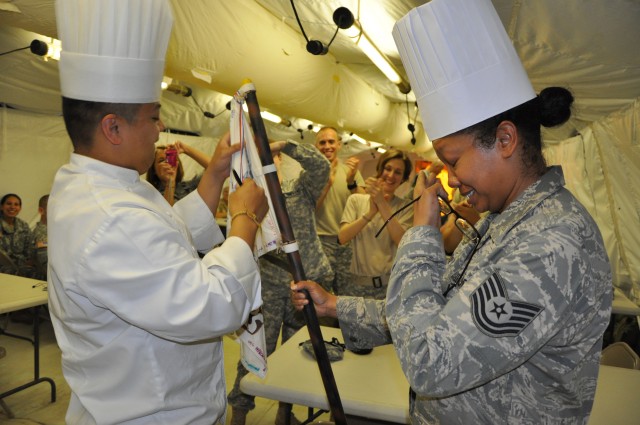
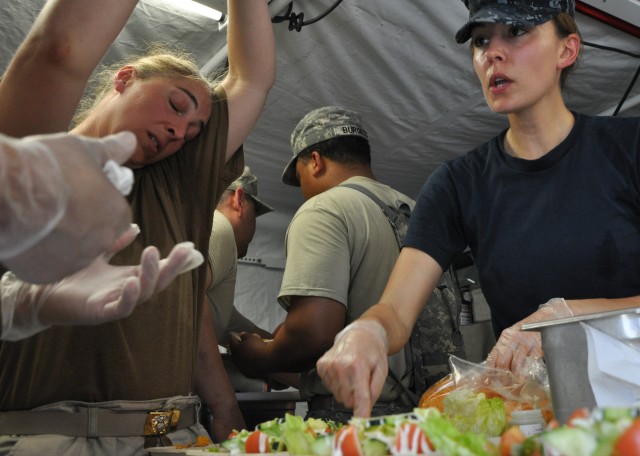
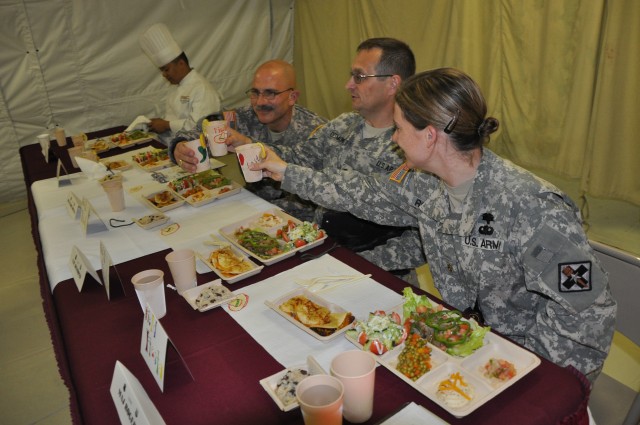
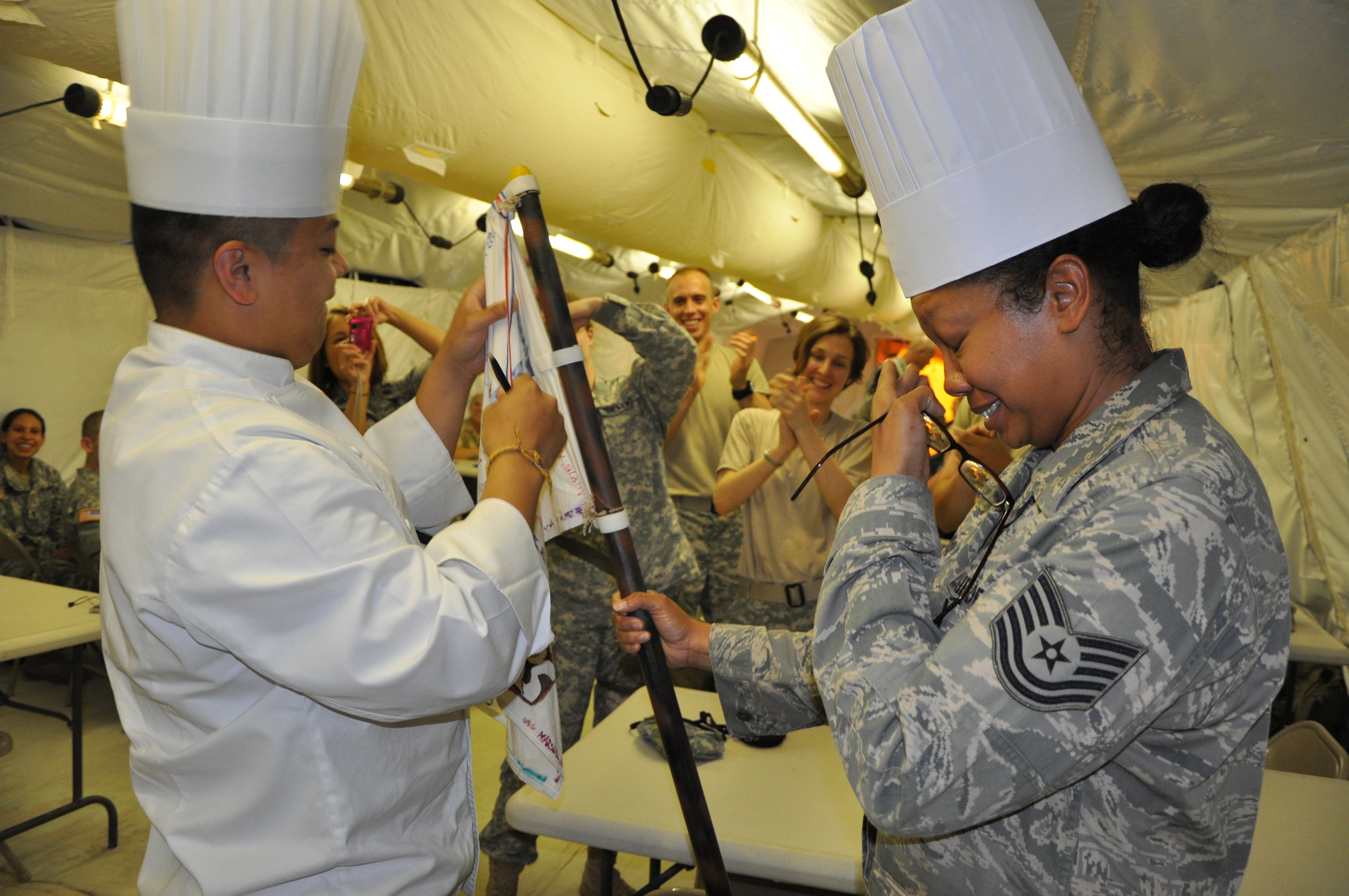
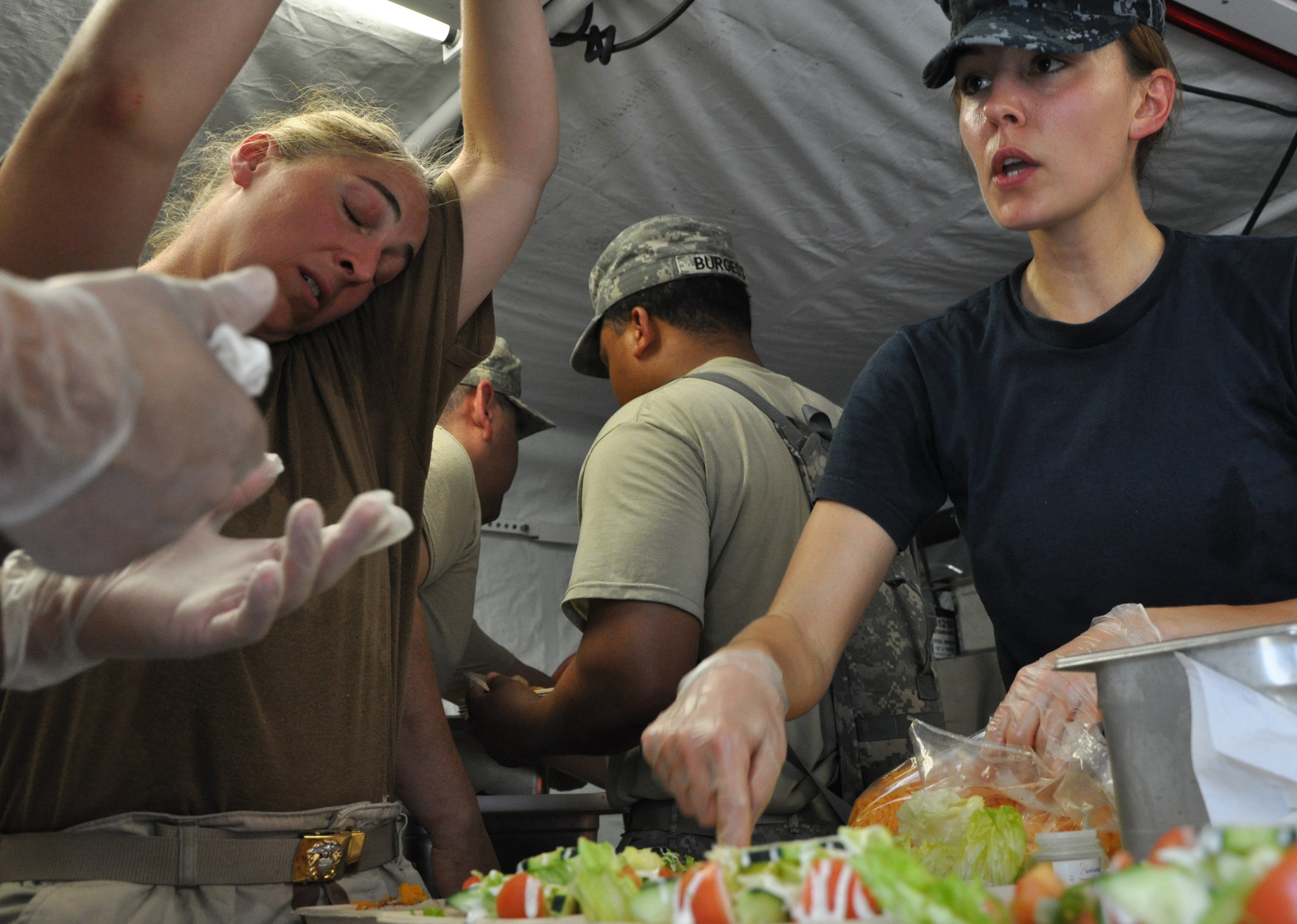

Social Sharing